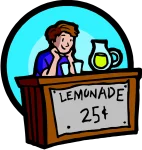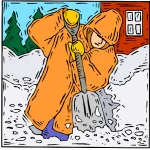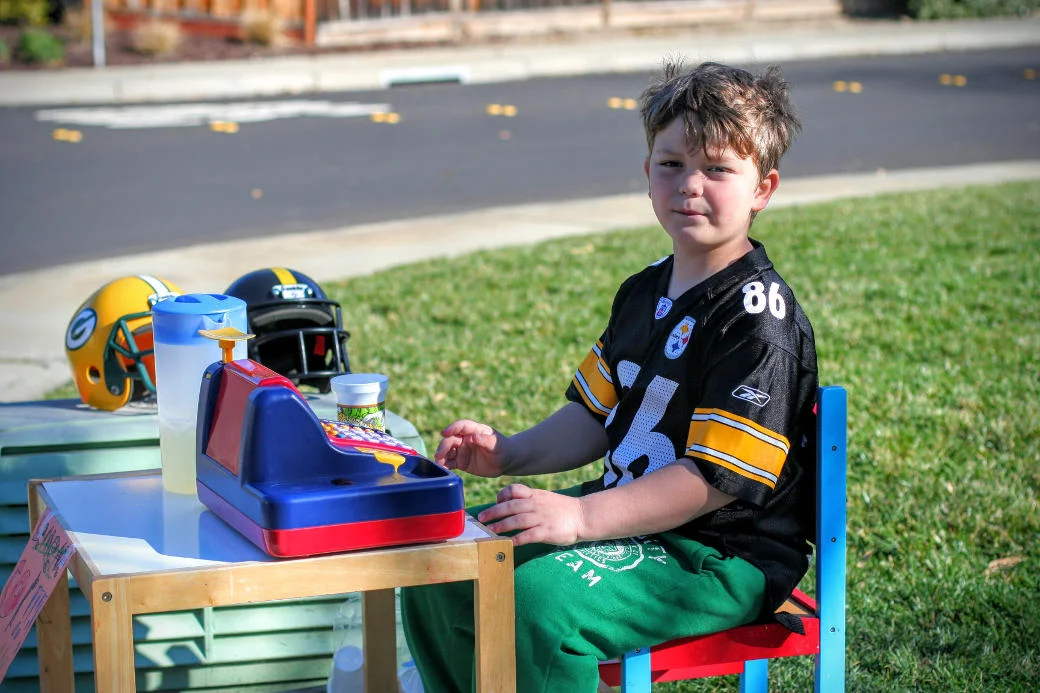This example helps to illustrate the motivational and leadership power that clearly defined visions can have. It also suggests that we may have some “unlearning” to do as adults.
A few years ago, I was walking a heavily traveled street near our house, when I approached a small, softspoken and somewhat serious-looking boy around age 9 or 10. He was selling lemonade at a table beside the sidewalk. Although I was in a hurry, I decided to stop briefly to buy a glass. “That’ll be fifty cents!” he exclaimed as he poured the cup.
 Dropping the quarters into his palm, I asked, “What are you raising money for?” I expected him to mention a school field trip, a bicycle, or an athletic fund.
Dropping the quarters into his palm, I asked, “What are you raising money for?” I expected him to mention a school field trip, a bicycle, or an athletic fund.
“I’m planting flowers for the neighborhood.”
I was silent for a brief moment of disbelief. “Wow, that’s really thoughtful of you! I hope you sell a lot of lemonade!”
As I continued home, I reflected upon the very matter-of-fact manner in which he stated his intentions, and the power with which it hit me. I thought to myself, “I hope he runs for public office someday!” At one point I even considered turning back to put a few dollars in his jar—his selfless energy made me want to contribute more to his cause than he had requested.
A common goal of coaching is to develop a clearer vision of what you want, and an accompanying sense of desire and confidence. This makes it easier to draw the resources needed to accomplish what you want. This 10-year-old was exhibiting a clarity of intent that many of us misplace as the years pass, and must later rediscover.
The following winter, I was working at the computer when I suddenly heard a repetitive metallic banging noise coming from the rear of our house, alongside the street. As I peered out the rear window, I was startled to see a small boy bundled up in his winter coat, wielding what looked like an ice-chipping or digging tool. He was eagerly attempting to whittle away a very large buildup of ice that had formed along a lengthy stretch of the sidewalk.
The boy’s energy and determination suggested that he was oblivious to the size of the task ahead of him. I assumed that he was probably hoping to earn a little spending money, but I didn’t want him to risk injuring himself while working on the slippery ice with a sharp tool. I decided it best to go outside, thank him for his efforts, and offer him a few dollars for whatever “allowance fund” he might have. I would tell him that I would be putting sand on the ice later that day.
I grabbed several dollars out of my wallet, threw on my coat and shoes, and walked down to speak with him. As he looked up, still chipping away at the ice, I realized it was the same boy who had been selling lemonade to plant flowers for the neighborhood. Was he currently raising funds for next year’s planting?
“Hey, I’m impressed with your efforts there! What motivated you to come down the street on such a cold day to work on this?”
 Very matter-of-factly, without a pause, “I saw the ice and thought somebody might slip on it.” He looked back down and continued to chip away.
Very matter-of-factly, without a pause, “I saw the ice and thought somebody might slip on it.” He looked back down and continued to chip away.
For a moment, I again stood dumbfounded, not sure what to say. Not that he was even waiting for a response.
I had previously all but given up on my own attempts to control that patch of ice, as neighbors had explained to me that it was from a year-round flow of water from an underground stream. Affectionately labeled the “Aylesboro Wetlands” by long-time residents, the annual ice patch had been there 30 years. The best we thought we could do was to put up caution tape each winter, and dump sand on it every few days.
Most residents had apparently stopped questioning its existence, even though pedestrians still had to walk out into the dangerous street to avoid it, and there was a story of a man supposedly slipping and breaking his leg some years prior. But here was a 10-year-old boy energetically taking the initiative to address the problem, apparently out of a pure sense of concern for others.
It took me a few moments to determine what to do. I didn’t want to destroy his youthful idealism and sense of initiative, but I still felt concerned that he might injure himself. At the same time, his actions also made me realize that I had somehow neglected my responsibility, had somehow failed to act upon my own wishes for a safe and healthy neighborhood.
Ultimately, I stuck with my original plan of praising him for his good deed, giving him some money to add to his fund, and letting him know that I’d do something about this ice. I told him he was right that somebody could slip and suffer an injury, and that I’d rather it be me than him.
Not too long after that, I began to “chip away at the ice” more proactively myself, trying not to think about the size of the task that sometimes seems to grow larger with each step. I developed my own vision for a safe sidewalk, and contacted several neighbors and local officials about the issue.
Following minimal responses, I placed a petition that was signed by 70 pedestrians, and submitted it to those leaders. A newspaper ran a story on the issue, and one of the officials organized a meeting with several local agency directors at our house.
A few neighbors have joined the cause; and after clarifying my own broader vision for a “healthy, safe and sustainable community,” I established an online community discussion site to build community coherence and social capital at a larger level.
Along the way, we’ve discovered the issue stems from a large abandoned mine crossing a number of properties, bringing with it a host of governmental and regulatory complexities, in addition to its nearly year-round ooze of acidic water. Following all these efforts, we have not yet developed a feasible solution, which has been frustrating at times.
However, our young neighbor probably wouldn’t concern himself with such complexities; he’d just keep chipping away at the ice, driven by his clear, youthful, unadulterated vision of a safe and healthy neighborhood. I plan to do the same.
How can you incorporate some of this 10-year-old boy’s enthusiasm into your own habits? How can this improve your motivation and your leadership of self and others?
Update: Thanks to a vision-driven team effort, nearly a dozen households ultimately pitched in to resolve the ice issue.
Photo “” by Flickr user John Morgan. Brightness, contrast, and size adjusted. License. The boy in the photo is not the person described in the story. As the story took place in Pittsburgh, his jersey is a fitting coincidence.

